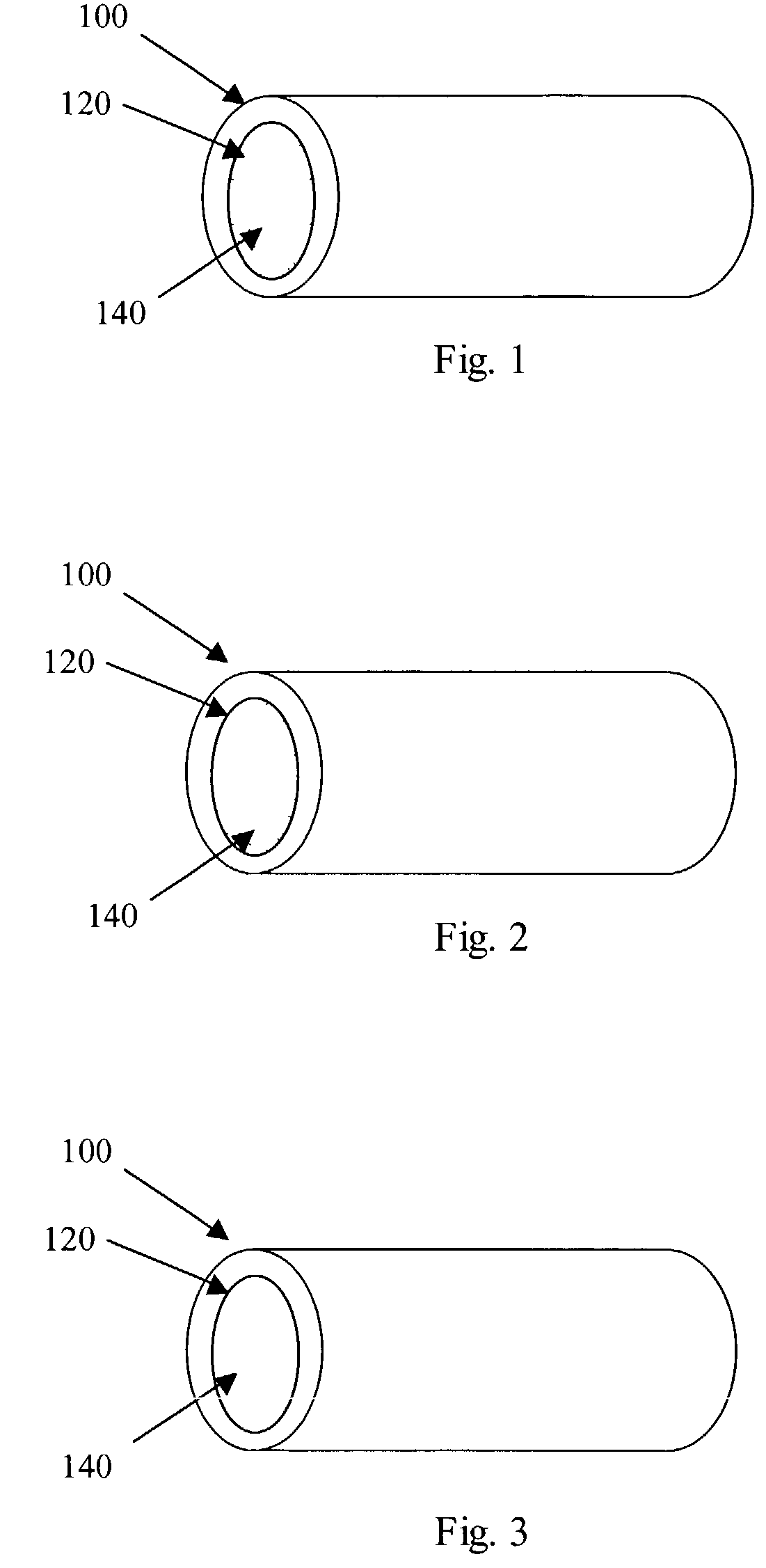Dielectric particles in optical waveguides for improved performance
- Summary
- Abstract
- Description
- Claims
- Application Information
AI Technical Summary
Benefits of technology
Problems solved by technology
Method used
Image
Examples
Embodiment Construction
[0016] Dispersion plays an important role in the ultimate performance of optical waveguides. There are two predominant types of dispersion: chromatic dispersion, and modal dispersion. Chromatic dispersion is the variation in the velocity of light traveling within a waveguide with changes in optical frequency. An optical data pulse traveling through a waveguide always contains a spectrum of frequencies which typically travel at different speeds. Thus, some frequency components arrive at the output earlier than others. The difference in arrival times of the various frequencies in the pulse results in distortion of the signal in the time domain and therefore broadening of the pulse. The broadened pulse is susceptible to errors when converted into a digital signal.
[0017] Modal dispersion (MD) is the measure of the difference in arrival times of parts of a single optical signal which is distributed among the various confined modes of an MMF. In the case of SI-MMF, higher order modes trav...
PUM
 Login to View More
Login to View More Abstract
Description
Claims
Application Information
 Login to View More
Login to View More - R&D
- Intellectual Property
- Life Sciences
- Materials
- Tech Scout
- Unparalleled Data Quality
- Higher Quality Content
- 60% Fewer Hallucinations
Browse by: Latest US Patents, China's latest patents, Technical Efficacy Thesaurus, Application Domain, Technology Topic, Popular Technical Reports.
© 2025 PatSnap. All rights reserved.Legal|Privacy policy|Modern Slavery Act Transparency Statement|Sitemap|About US| Contact US: help@patsnap.com


